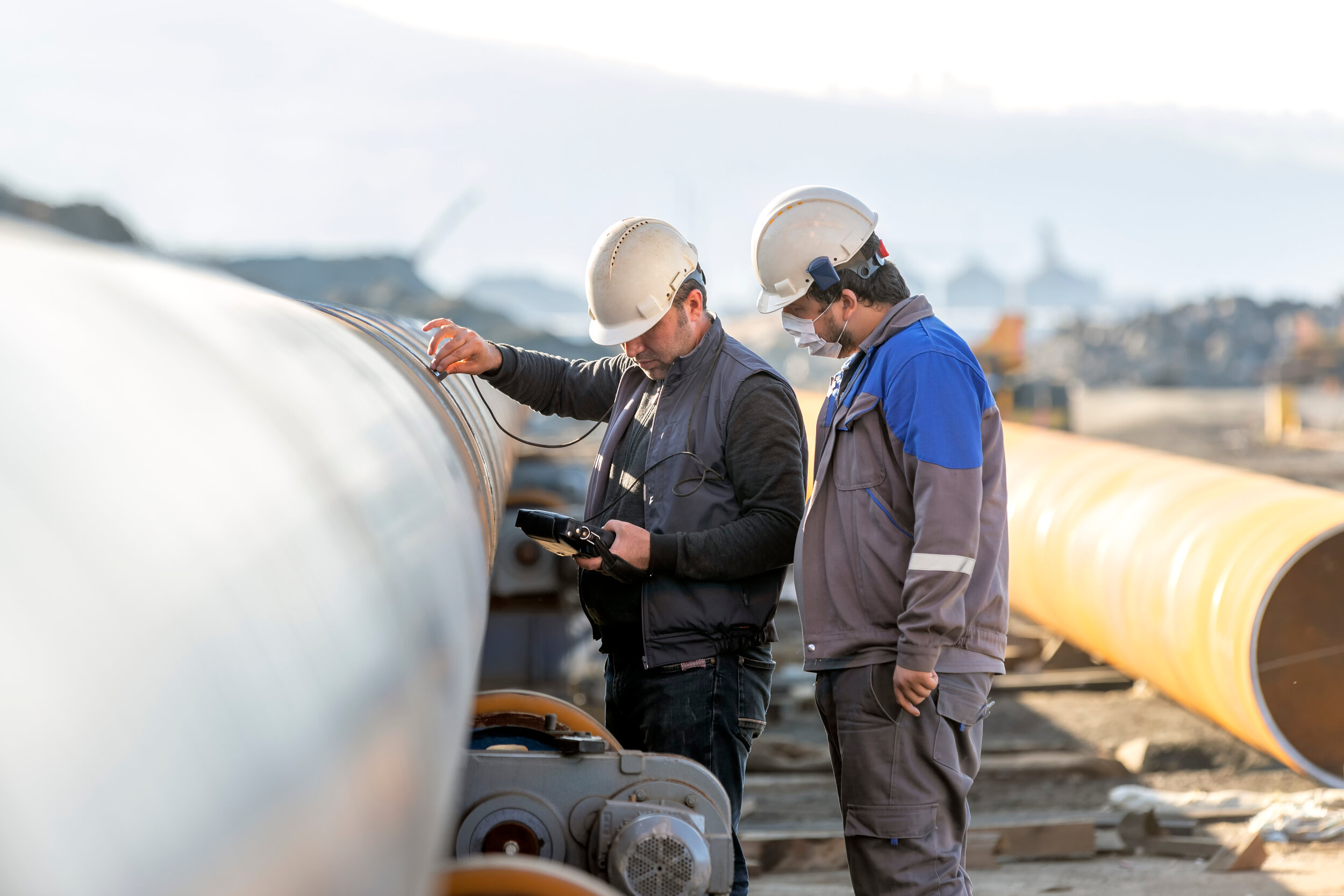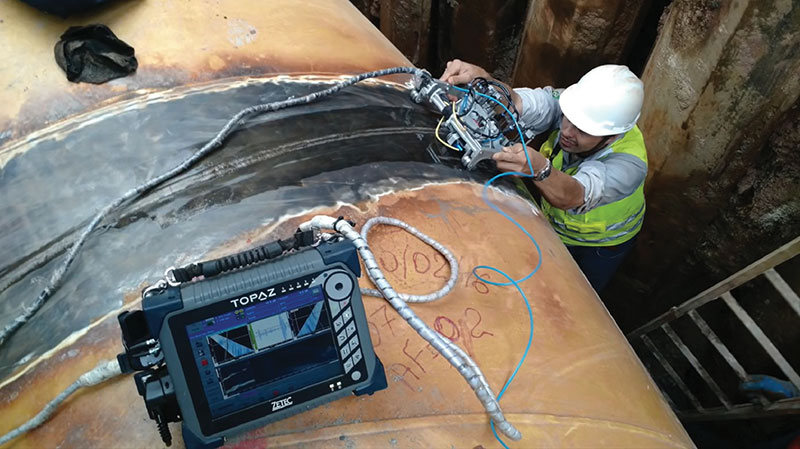Taking Full Advantage Of Efficiency: Pipe Welding Assessment Best Practices
By implementing best practices for pipe welding examination, companies can enhance procedures, reduce errors, and improve job timelines. The thorough focus to detail required in welding evaluation holds the crucial to the lasting durability and reliability of the pipelines, making it a subject of utmost significance in the market.

Relevance of Reliable Welding Inspections
Efficient welding evaluations play a critical role in ensuring the structural stability and security of pipes. Correct examinations are necessary to identify any problems, interruptions, or blemishes in the bonded joints that can endanger the general stability of the pipe system. By carrying out complete examinations, assessors can identify concerns beforehand, preventing possible leakages, tears, or failures that could have serious environmental and safety and security effects.
Prompt and precise welding inspections additionally aid in preserving compliance with industry criteria and laws. Sticking to these standards is not only a lawful demand but also an essential procedure to ensure the reliability and long life of the pipelines. Reliable evaluations can add to set you back savings by decreasing the requirement for costly fixings or replacements due to welding issues that might have been protected against or remedied during the examination process.
Making Use Of Innovation for Inspections
To improve the efficacy and precision of pipe welding evaluations, the assimilation of advanced innovations has actually ended up being significantly necessary in ensuring detailed and accurate assessments of welded joints. Making use of technology for evaluations supplies numerous benefits, consisting of raised efficiency, enhanced accuracy, and enhanced safety and security measures. One of the crucial technical advancements in pipeline welding evaluations is the usage of automated ultrasonic screening (AUT) systems. These systems can check welds promptly and accurately, offering in-depth information on possible issues or concerns within the weld joint. In addition, remote aesthetic inspection (RVI) tools such as robotic crawlers equipped with video cameras enable examiners to gain access to and examine difficult-to-reach locations without the requirement for substantial disassembly or hand-operated treatment. The execution of digital systems for data analysis and reporting streamlines the inspection process, making it possible for real-time information analysis and seamless documentation. By welcoming these technical options, pipeline welding assessments can be carried out much more effectively, leading to greater quality welds, improved total security, and decreased project timelines.
Developing Clear Inspection Procedures
Developing clear inspection procedures is essential for making sure uniformity and reliability in the pipeline welding assessment procedure. These protocols work as a collection of standards that outline the particular actions, standards, and methods to be complied with throughout examinations. By plainly defining the evaluation procedures, all assessors entailed in the procedure can understand their obligations and duties, bring about an extra standardized and efficient evaluation process.

Normal testimonial and updates to the examination methods are additionally critical to adjust to transforming sector requirements and demands. By constantly refining and improving the protocols based on responses and lessons found out, pipe welding evaluations can support the best quality standards and governing conformity.
Training and Accreditations for Examiners

Training and qualifications for examiners are critical in ensuring the capability and efficiency of individuals entrusted with managing pipeline welding procedures - Pipeline Welding Inspection. Correctly educated examiners possess the essential understanding and skills to properly assess weld top quality, adherence to welding treatments, and conformity with market standards and guidelines
Certifications, such as those supplied by the American Welding Society (AWS) or the American Oil Institute (API), validate an examiner's knowledge and capacity to carry out examinations to the greatest criteria. These certifications commonly need rigorous training, assessments, and recurring expert growth to ensure that examiners remain current with the most up to date advancements in welding innovation and examination techniques.
In addition to formal accreditations, continuous training programs play a critical role in improving assessors' capabilities. These programs cover a variety of topics, including welding processes, defect detection, safety and security protocols, and relevant codes and criteria (Pipeline Welding Inspection). By purchasing extensive training and certifications for inspectors, business can maintain the stability of their pipeline welding projects and alleviate the threats related to low quality welds
Continual Improvement in Evaluation Processes
Building upon the structure of trained and licensed examiners, continuous enhancement in assessment processes is essential for making sure the recurring quality and conformity of pipe welding procedures. By carrying out a system of continuous enhancement, pipeline welding assessment processes can progress to satisfy the changing demands of the sector, technical improvements, and regulative requirements. This entails routinely reviewing and assessing assessment tools, procedures, and strategies to recognize areas for enhancement.
One key aspect of constant improvement in evaluation processes is comments. Collecting input from assessors, welders, engineers, and various other stakeholders permits an extensive assessment of current practices and the recognition of potential locations for enhancement. Additionally, leveraging information and analytics can supply valuable understandings right into the efficiency of inspection processes, enabling educated decision-making for official site optimization.
Additionally, purchasing training and development programs for assessors can make sure that they are furnished with the most up to date knowledge and skills to do their responsibilities efficiently. Constant renovation is a vibrant procedure that calls for devotion and dedication from all stakeholders to drive excellence in pipe welding assessment practices.
Conclusion
In conclusion, maximizing effectiveness in pipe welding evaluations is important for ensuring the quality and safety and security of framework tasks. By utilizing technology, developing clear protocols, providing appropriate training and qualifications for examiners, and continually enhancing inspection procedures, organizations can simplify their operations and lessen dangers. It is essential for industries to focus on effective welding examinations to keep high criteria and meet regulatory demands.
Effective assessments go now can add to cost savings by reducing the need for expensive repair work or replacements due to welding flaws that might have been stopped or remedied throughout the inspection procedure.
Developing clear assessment methods is essential for making certain consistency and dependability in the pipe welding inspection procedure. By clearly specifying the assessment methods, all examiners included in the process can comprehend their roles and duties, leading to a more standard and reliable evaluation workflow.
Clear inspection procedures aid in lowering the chance of errors or oversights during the assessment procedure.Building upon the foundation of qualified and experienced inspectors, continuous improvement in inspection processes is important for guaranteeing the continuous quality and compliance of pipeline welding operations.